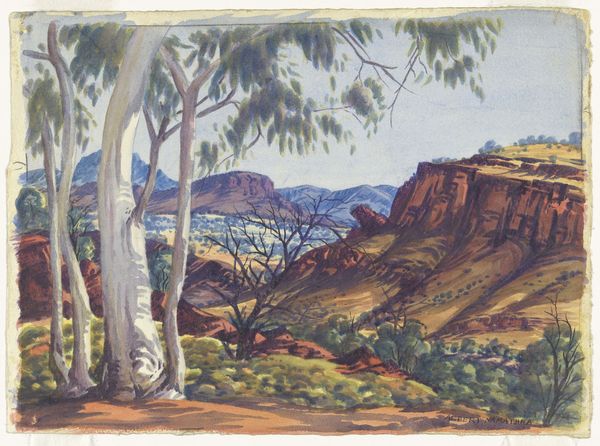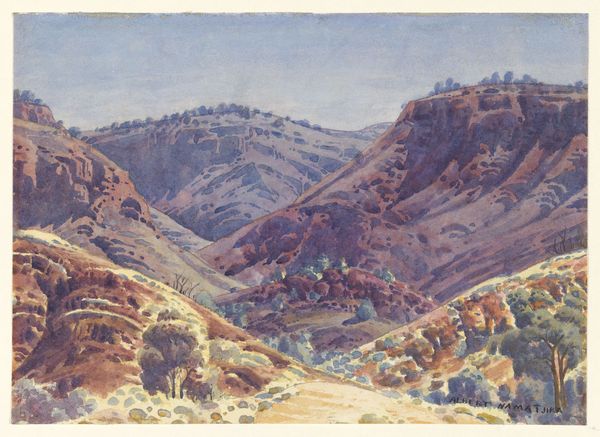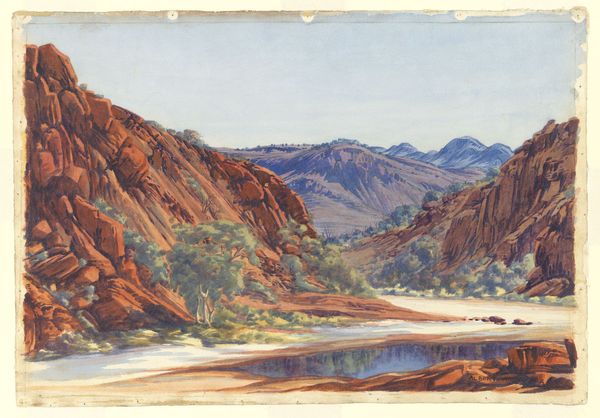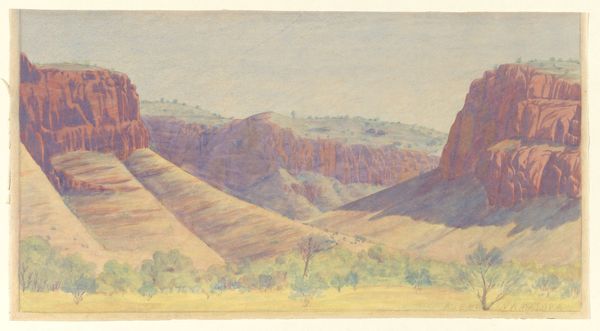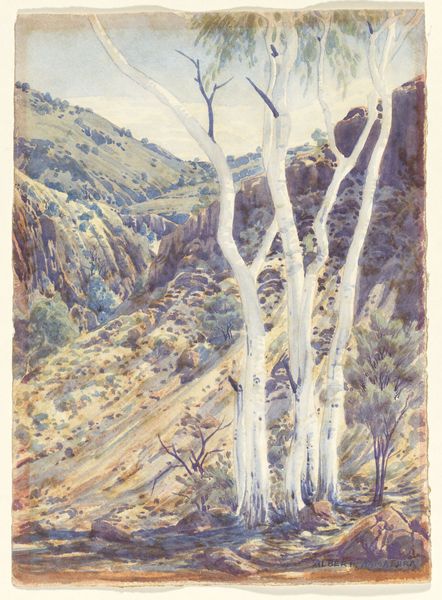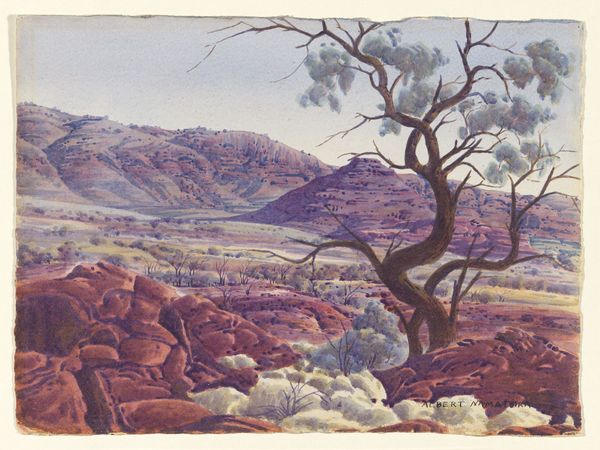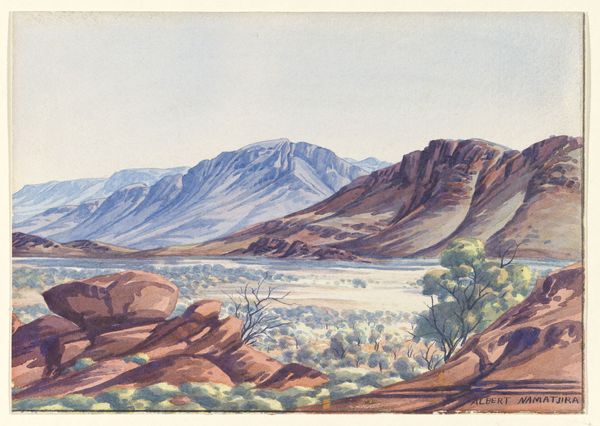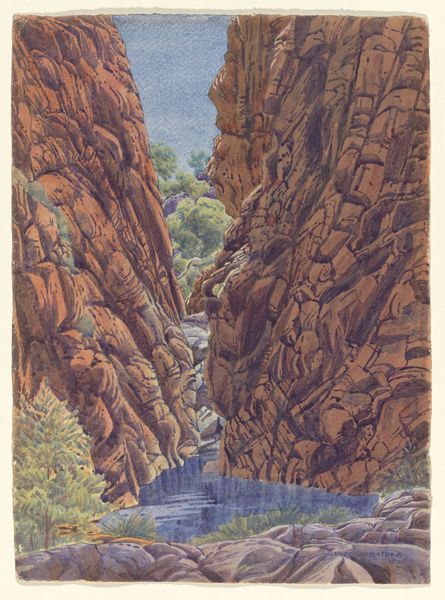
plein-air, watercolor
#
plein-air
#
landscape
#
impressionist landscape
#
figuration
#
watercolor
#
watercolor
#
realism
Copyright: Albert Namatjira,Fair Use
Curator: Look at this beautiful watercolor, Glen Helen, First Gap, Finke River by Albert Namatjira, painted in 1948. Editor: It has a subdued, almost melancholic quality, don’t you think? The washes of color give it a dreamlike feel, a quiet solitude hangs over this landscape. Curator: I find it fascinating how Namatjira blends the Western watercolor tradition with his deep knowledge and connection to the Australian landscape. He paints these iconic natural formations—the imposing rock faces, the seemingly endless plains—but imbues them with a sense of personal history. Editor: Precisely. This landscape cannot be separated from the socio-political landscape. Namatjira was painting during a time when Indigenous Australians were denied citizenship, their connection to land actively disregarded by colonial powers. Painting the land becomes an act of resistance, asserting enduring cultural connections. Curator: And observe the subtle, almost abstracted forms in the rock face. These are not merely geological features, they are imbued with ancestral narratives. Consider the symbolism of water in indigenous cultures; it's more than mere substance, it's the source of life, a pathway for stories and dreaming. Editor: It's crucial to remember how the reception of his work was tied to racist ideologies. White critics praised his adherence to Western styles while conveniently overlooking the inherent Indigenous knowledge and perspective embedded within the very fabric of the painting. Curator: There's a powerful tension between what is represented and what is evoked—the sheer scale of the land contrasted with the intimacy of the watercolor medium. The layering of meaning becomes central. Editor: Absolutely. The landscape carries a legacy of dispossession but also represents a continued presence. It reminds us that these are not simply picturesque views, but spaces of complex history and ongoing struggle. Curator: Seeing the symbols in the land in this context makes it clear this picture goes well beyond simply an landscape in watercolors. Editor: It's a potent reminder of art's capacity to function as both a historical document and an act of defiance. It challenges viewers to reckon with difficult pasts while inspiring thoughts about the future.
Comments
No comments
Be the first to comment and join the conversation on the ultimate creative platform.


